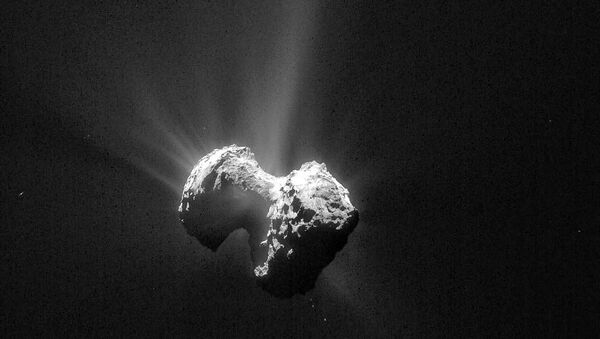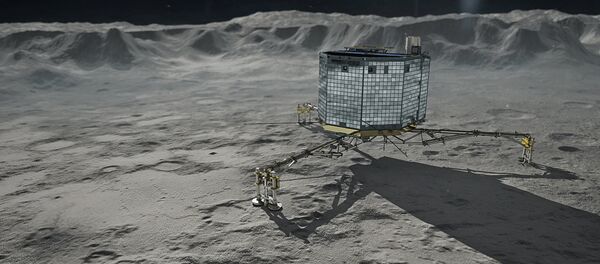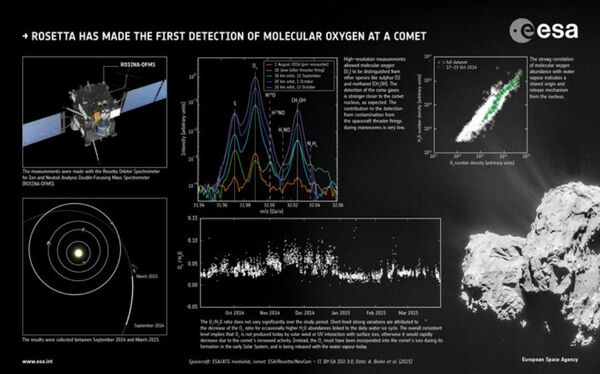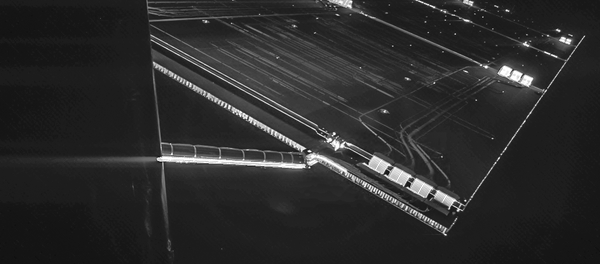The gas is stronger closer to the comet's nucleus, and is being released along with water vapor. The strong correlation of the abundance of molecular oxygen and water vapor suggests that the molecules were a part of the comet during its formation, the scientists reported in their paper, published on Thursday in the journal Nature.
"We weren’t really expecting to detect O2 at the comet – and in such high abundance – because it is so chemically reactive, so it was quite a surprise," explained Kathrin Altwegg of the University of Bern, a principal investigator on the Rosetta mission.
"It’s also unanticipated because there aren’t very many examples of the detection of interstellar O2. And thus, even though it must have been incorporated into the comet during its formation, this is not so easily explained by current Solar System formation models."
Because it is highly reactive, and readily breaks up to form compounds with most elements, molecular oxygen is hard to detect in space, where it is the third most abundant element in the Universe. The most abundant is hydrogen, which makes up 3/4 of the mass of the Universe, followed by helium, which makes up almost all of the remaining 25 percent.
Though a distant third in space, oxygen is the most common element in the Earth's crust, and makes up about 47 percent of its mass.
A graphic of results from data collected by the Rosetta Orbiter Spectrometer for Ion and Neutral Analysis Double-Focusing Mass Spectrometer (ROSINA-DFMS) between September 2014 and March 2015 when Rosetta was still on the approach to the Sun along its orbit.
The discovery of oxygen at Comet 67P/Churyumov-Gerasimenko follows the discovery of the noble gas argon at the comet in September. The element was found using the Rosetta Orbiter Spectrometer for Ion and Neutral Analysis [ROSINA] aboard the Rosetta spacecraft, which was launched by the European Space Agency in March 2004.
The ROSINA instrument on board Rosetta is able to determine the composition of the comet's atmosphere, and the reactions of its gas and ions. By finding out the chemical make-up of comets, scientists hope to understand their role in bringing water and other elements to the inner planets during the early history of the Solar System.






